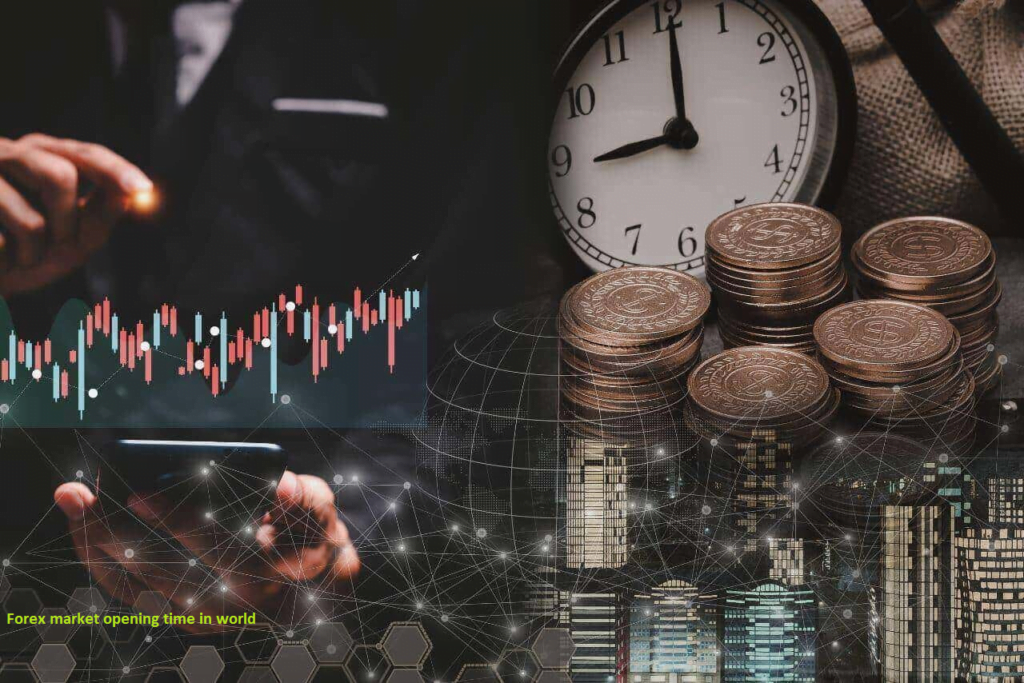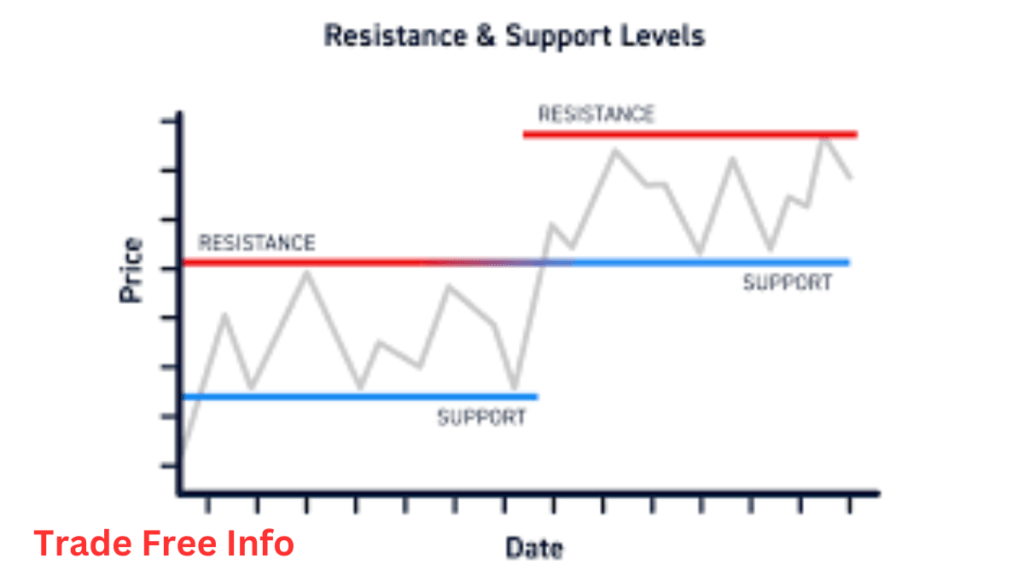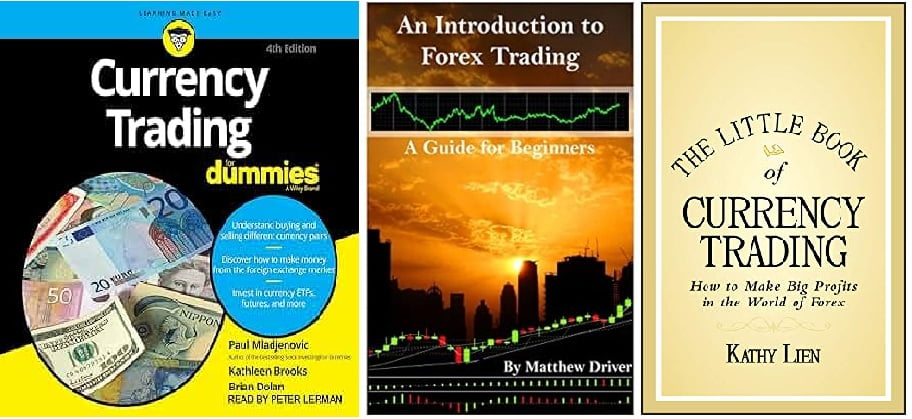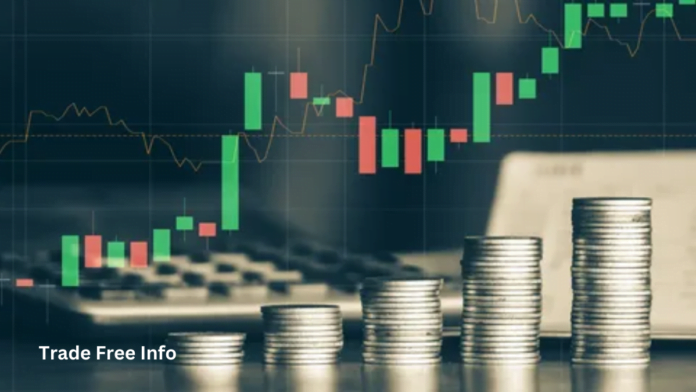I. Forex trading step-by-step guide for beginners
Welcome to the dynamic world of Forex trading – a realm where currencies are bought and sold, creating opportunities for financial growth. If you’re new to Forex, fear not; this beginner’s guide is tailored just for you.
A. Brief Definition of Forex Trading
Forex, short for foreign exchange, refers to the global marketplace where currencies are traded against one another. Unlike stock markets, the Forex market operates 24 hours a day, five days a week, making it an enticing venture for those seeking flexibility and accessibility.
B. Importance of Understanding Forex for Beginners
Understanding Forex is a pivotal step for anyone interested in navigating the financial markets. This guide aims to demystify the complexities, providing you with the knowledge needed to embark on your Forex trading journey.
C. Overview of What the Article Will Cover
In the sections that follow, we’ll delve into the fundamentals of Forex trading, from the basics of the market to practical tips for beginners. Whether you’re intrigued by the potential for high returns or eager to grasp the intricacies of currency trading, this guide is your compass in the vast landscape of Forex.
Ready to unlock the secrets of Forex trading? Let’s embark on this educational journey together.
II. What is Forex Trading?
A. Definition of Forex
Forex trading is the decentralized global market where currencies are exchanged. It stands for foreign exchange, and its primary purpose is to facilitate the conversion of one currency into another for various reasons, including commerce, tourism, and investment.
In the Forex market, currencies are traded in pairs, such as EUR/USD (Euro/US Dollar) or GBP/JPY (British Pound/Japanese Yen). The value of a currency pair is determined by the exchange rate, representing the amount of one currency needed to purchase another.
B. Explanation of the Forex Market
The Forex market operates as an over-the-counter (OTC) market, meaning it doesn’t have a physical location or central exchange. Instead, it functions electronically, with a network of banks, financial institutions, corporations, and individual traders participating. This global nature makes Forex the largest and most liquid financial market in the world.
C. Participants in the Forex Market
- Banks and Financial Institutions: Central banks and commercial banks play a crucial role, not only by trading on their own behalf but also by facilitating transactions for businesses and governments.
- Corporations: Companies engaged in international trade use the Forex market to convert profits from foreign sales into their domestic currency.
- Retail Traders: Individuals like you, trading from the comfort of their homes, have become a significant part of the Forex market. This accessibility is due to technological advancements and the rise of online trading platforms.
Understanding the dynamics of the Forex market is fundamental for anyone venturing into currency trading. In the upcoming sections, we’ll explore the reasons why Forex trading is gaining popularity, its advantages, and the essential knowledge needed for beginners to navigate this exciting financial landscape.
Stay tuned for insights that will empower you to make informed decisions in the world of Forex.
III. Why Forex Trading?
A. Advantages of Forex Trading
1. High Liquidity
Forex is renowned for its unparalleled liquidity. This means that you can buy and sell currencies with ease, as there are always willing buyers and sellers. High liquidity translates to minimal price slippage, allowing you to execute trades at the desired price levels.
2. 24-Hour Market Access
Unlike traditional stock markets with fixed trading hours, the Forex market operates 24 hours a day from Monday to Friday. This continuous operation accommodates traders from various time zones, providing flexibility to engage in trading activities at any convenient time.

3. Potential for High Returns
The dynamic nature of the Forex market allows for the potential of high returns on investment. With leverage, traders can control larger positions with a relatively small amount of capital, amplifying both profits and losses. However, it’s crucial to approach leverage cautiously and understand the associated risks.
B. Risks and Challenges
1. Market Volatility
While volatility presents trading opportunities, it also poses risks. Prices in the Forex market can fluctuate rapidly, leading to unexpected losses. Traders need to employ risk management strategies, such as setting stop-loss orders, to mitigate potential downsides.
2. Leverage Risks
Leverage can magnify both gains and losses. While it provides the opportunity to control larger positions, it also increases the risk of significant losses. Understanding how to use leverage wisely is paramount for responsible Forex trading.
3. Importance of Risk Management
Successful Forex trading involves more than just predicting market movements. It requires effective risk management to protect your capital. This includes determining the appropriate position size, setting stop-loss orders, and diversifying your trading portfolio.
C. Conclusion
Entering the world of Forex trading offers exciting prospects, but it comes with its set of challenges. As we delve deeper into this guide, we’ll equip you with the knowledge and tools to navigate the Forex market responsibly. From understanding market dynamics to implementing risk management strategies, our aim is to empower you on your journey to becoming a confident and informed Forex trader.
IV. Getting Started in Forex Trading
A. Setting Up a Trading Account
The first step in entering the world of Forex trading is setting up a trading account. Choose a reputable Forex broker that aligns with your trading goals. Look for brokers with user-friendly platforms, competitive spreads, and regulatory compliance. Registering an account is usually a straightforward process that involves providing personal information, verifying your identity, and funding your account.
B. Understanding Currency Pairs
1. Major, Minor, and Exotic Pairs
Forex trading involves the pairing of currencies. Major pairs include the most traded currencies globally, such as EUR/USD and USD/JPY. Minor pairs consist of currencies from smaller economies, excluding the U.S. dollar. Exotic pairs involve one major currency and one from a developing or emerging-market economy.
2. Reading Currency Pair Quotes
Currency pair quotes provide information about the exchange rate. For example, if the EUR/USD pair is quoted as 1.1500, it means one Euro is equivalent to 1.15 U.S. dollars. Understanding these quotes is fundamental for executing trades and analyzing market movements.
C. Introduction to Forex Brokers
1. Choosing a Reliable Broker
Selecting the right Forex broker is crucial for a positive trading experience. Consider factors such as regulatory compliance, trading fees, available currency pairs, and the quality of customer support. Reading reviews and seeking recommendations can help you make an informed decision.
2. Demo Accounts for Practice
Before risking real capital, take advantage of demo accounts offered by most brokers. These accounts simulate real market conditions, allowing you to practice trading strategies and familiarize yourself with the platform risk-free.
V. Basic Concepts for Beginners
A. Pips and Lots
1. Pips (Percentage in Points)
Pips are the fundamental unit of measurement in Forex trading, representing the smallest price movement in the exchange rate of a currency pair. Most currency pairs are quoted to four decimal places, with one pip typically equal to 0.0001. Understanding pips is essential for assessing price changes and calculating potential profits or losses.
2. Lots
Lots refer to the size of a trading position. Standard lots are typically 100,000 units of the base currency, while mini lots are 10,000 units, and micro lots are 1,000 units. The lot size chosen determines the value of each pip movement. For beginners, it’s advisable to start with smaller lot sizes to manage risk effectively.
B. Understanding Margin and Leverage
1. Margin
Margin is the collateral required to open and maintain a trading position. It is expressed as a percentage of the total trade size. Trading on margin allows traders to control larger positions with a smaller amount of capital. However, it’s crucial to use margin responsibly, as it amplifies both profits and losses.
2. Leverage
Leverage is a double-edged sword in Forex trading. It magnifies the impact of price movements, potentially increasing profits. However, it also increases the risk of significant losses. Common leverage ratios include 50:1, 100:1, and 500:1. Beginners should use leverage cautiously and be aware of its implications on risk management.
C. Order Types: Market Orders, Limit Orders, and Stop Orders
1. Market Orders
A market order is an instruction to buy or sell a currency pair at the current market price. It ensures immediate execution but may be subject to slippage during highly volatile market conditions.
2. Limit Orders
A limit order allows traders to specify the desired entry or exit price. It is executed when the market reaches the predetermined price level. Limit orders are useful for entering trades at more favorable rates.
3. Stop Orders
A stop order is designed to limit potential losses or protect profits by triggering a market order when the price reaches a specified level. This is crucial for risk management and avoiding excessive losses.
VI. Developing a Trading Strategy
A. Importance of a Trading Plan
Successful Forex trading is not merely about making predictions; it’s about having a well-defined trading plan. A trading plan outlines your approach to the market, including your risk tolerance, financial goals, and the strategies you’ll employ. Having a plan in place helps you make informed decisions and stay disciplined in the face of market fluctuations.
B. Fundamental Analysis for Beginners
1. Economic Indicators
Fundamental analysis involves evaluating economic indicators to gauge a currency’s strength. For beginners, focusing on major economic indicators like GDP growth, interest rates, and employment figures is a solid starting point. These indicators provide insights into the overall health of a country’s economy.
2. Central Bank Policies
Understanding the policies of central banks, especially major ones like the Federal Reserve and the European Central Bank, is crucial. Central banks play a significant role in influencing interest rates, which, in turn, impact currency values.
C. Basics of Technical Analysis
1. Candlestick Patterns
Candlestick patterns are visual indicators of market sentiment. Learning to recognize patterns like doji, engulfing, and hammer can help you anticipate potential price reversals or continuations.

2. Support and Resistance Levels
Identifying support and resistance levels is a fundamental aspect of technical analysis. Support represents a price level where a currency tends to stop falling, while resistance is a level where it tends to stop rising. These levels help traders make decisions about entry and exit points.
Developing a trading strategy requires a combination of both fundamental and technical analysis. As a beginner, it’s essential to experiment with different approaches and find a strategy that aligns with your risk tolerance and financial goals.

VII. Common Mistakes to Avoid
A. Overtrading
Overtrading is a pitfall that many beginners fall into, driven by the desire for quick profits. Trading excessively, especially without a well-defined strategy, can lead to significant losses. It’s crucial to prioritize quality over quantity when executing trades. Stick to your trading plan and avoid impulsive decisions.
B. Ignoring Risk Management
Risk management is the cornerstone of successful Forex trading. Neglecting to set stop-loss orders or failing to diversify your trading portfolio can expose you to unnecessary risks. Establishing clear risk management strategies, such as determining the size of your positions and setting realistic profit targets, is essential for safeguarding your capital.
C. Emotional Trading Pitfalls
Emotions can cloud judgment and lead to irrational decisions. Fear and greed are common emotions that can impact trading outcomes. Fear may prompt you to exit a trade prematurely, while greed can result in holding onto a position for too long. Developing emotional resilience and sticking to your trading plan can help mitigate these pitfalls.
As a beginner, it’s natural to make mistakes, but learning from them is crucial for growth. Take the time to analyze your trades, identify areas for improvement, and refine your strategy accordingly.
VIII. Resources for Ongoing Learning
A. Recommended Books and Websites
1. Books for Beginners
- “Currency Trading for Dummies” by Kathleen Brooks and Brian Dolan
- “A Beginner’s Guide to Forex Trading” by Matthew Driver
- “The Little Book of Currency Trading” by Kathy Lien

2. Websites for Educational Content
- Investopedia: Offers comprehensive articles, tutorials, and a financial dictionary.
- BabyPips: Known for its user-friendly education content, including the School of Pipsology.
- DailyFX: Provides market analysis, educational webinars, and trading insights.
B. Online Courses for Beginners
1. Coursera – Forex Courses
- “Trading Strategies in Emerging Markets” by Indian School of Business
- “Financial Markets and Investment Strategy” by Indian School of Business
2. Udemy – Forex Trading Courses
- “Forex Trading A-Z™ – With LIVE Examples of Forex Trading”
- “Forex Trading for Beginners – From Basics to Advanced”
C. Joining Forex Communities and Forums
1. Forex Factory
- A popular forum where traders share insights, strategies, and market analysis.
2. Investing.com Community
- A diverse community discussing various financial instruments, including Forex.
As you continue your Forex trading journey, ongoing learning is key to staying informed and adapting to market changes. Explore these resources to deepen your understanding and refine your trading skills.
IX. Conclusion
Congratulations on reaching the end of this beginner’s guide to Forex trading! We’ve covered the essentials, from understanding the basics of the Forex market to developing a solid trading strategy and learning from common mistakes.
As you embark on your Forex journey, remember that continuous learning is the key to success. Utilize the recommended books, websites, and online courses to deepen your knowledge. Joining Forex communities allows you to connect with fellow traders and gain valuable insights.
Stay disciplined, manage risks wisely, and don’t let emotions guide your decisions. The Forex market offers tremendous opportunities, but success comes to those who approach it with a well-informed and strategic mindset.
Whether you’re aiming for financial growth or simply exploring a new interest, the world of Forex trading is dynamic and full of possibilities. Embrace the learning process, stay curious, and enjoy the exciting adventure that lies ahead.
Best of luck on your Forex trading journey!
Frequently asked questions (FAQs) related to the topic of “Forex Trading: A Best Beginner’s Guide”:
1. What is Forex Trading?
- Forex trading, short for foreign exchange trading, involves the buying and selling of currencies on the global market. It is the largest and most liquid financial market in the world.
2. How does Forex Trading Work?
- Forex trading works through the exchange of one currency for another at an agreed-upon exchange rate. Traders aim to profit from fluctuations in exchange rates.
3. Who Participates in the Forex Market?
- Participants include central banks, commercial banks, corporations, and individual traders. The market operates 24 hours a day, five days a week, allowing for global participation.
4. How Do I Get Started in Forex Trading?
- To get started, open a trading account with a reputable broker, understand currency pairs, and familiarize yourself with trading platforms. Consider practicing with a demo account before risking real capital.
5. What Are Pips and Lots in Forex Trading?
- Pips are the smallest price movements in currency pairs, and lots refer to the size of a trading position. Understanding these concepts is crucial for risk management and profit calculation.
6. What is Leverage, and How Does It Work?
- Leverage allows traders to control larger positions with a smaller amount of capital. It magnifies both profits and losses, so it’s essential to use leverage responsibly and understand its impact on risk.
7. What Are the Common Mistakes to Avoid in Forex Trading?
- Common mistakes include overtrading, neglecting risk management, and succumbing to emotional pitfalls like fear and greed. Traders should focus on discipline, strategy, and continuous learning.
8. Are There Resources for Ongoing Learning in Forex Trading?
- Yes, there are many resources, including books (“Currency Trading for Dummies,” online courses (Coursera, Udemy), and forums (Forex Factory, Investing.com Community) that can help beginners deepen their understanding of Forex trading.
9. Is Forex Trading Risky?
- Like any form of trading, Forex trading carries risks. However, with proper education, risk management, and discipline, traders can mitigate risks and work towards sustainable success.
10. What Should I Keep in Mind as a Beginner in Forex Trading?
- Beginners should focus on learning, developing a solid trading plan, and practicing disciplined trading. It’s important to start with a small capital, use leverage cautiously, and continuously refine strategies based on experience.

